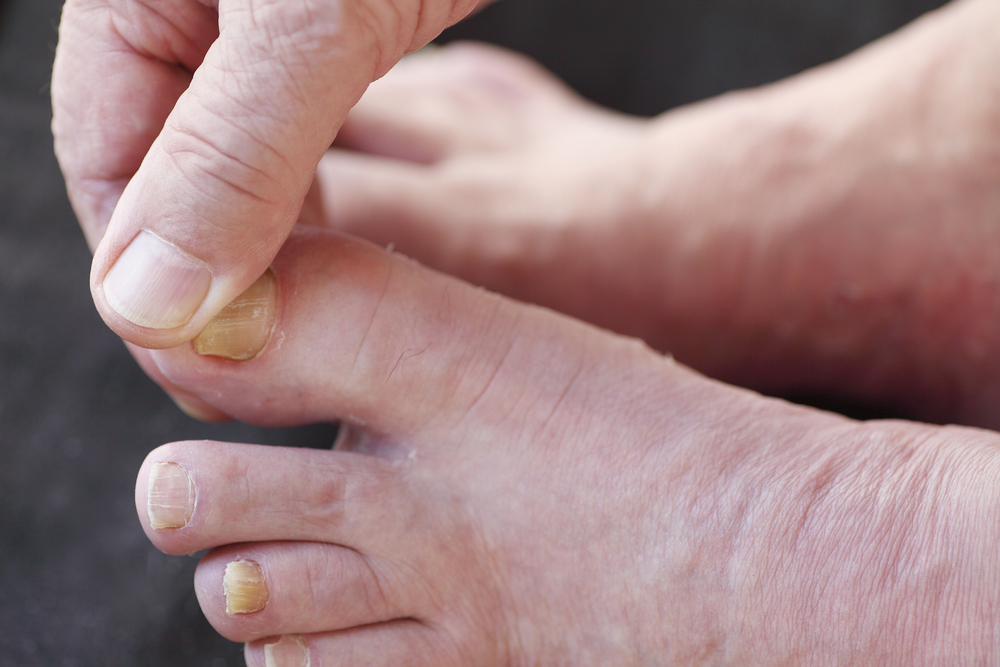Your feet are the foundation of your balance, mobility, and your health. Although you may not think about it, the heath of your toenails is incredibly important for your overall hygiene and health. This is why treating toenail issues is important as soon as they are discovered. At Island Foot Clinics in Nanaimo, BC, we know that treating fungal toenails is the first step to reclaiming your health.
How Long Does It Take to Treat Fungal Toenails in Nanaimo?
The length of your treatment process will ultimately depend on the treatment that is being used. For nail fungus, you will have the option of topical medication, oral medication, debridement, or surgical treatments. Each of these treatment methods will have a different treatment timeline, which may also factor in the severity of your condition.
But generally speaking, most of the time topical and oral treatments can improve nail fungus within about three months, while debridement and surgery can correct nail fungus a bit faster. Your podiatrist will be able to examine the condition of the affected toes to give you an estimate of what to expect for your treatment timeline. The important thing to focus on is the fact that nail fungus can be successfully treated.
Topical Medications
Topical medications are anti-fungal liquids or creams that are applied to the affected toenail multiple times a day. While you can use over-the-counter antifungal products, many patients find more success with prescription-strength medications that are written for the specific fungal infection you have.
Oral Medications
Oral antifungals are a highly effective treatment option that helps your body battle the fungal infection from the inside out. Oral treatments are sometimes combined with topical treatments to combat particularly advanced fungal nails.
Debridement
Debridement is a non-surgical treatment that removes part of the diseased nail or nail debris to better treat the fungal infection. Debridement can remove the deformed nail to allow for direct topical anti-fungal treatments and is generally used if oral antifungals have not adequately treated the nail.
Surgery
Surgical treatment for nail fungus may be necessary if the deformed nail returns with the fungal infection still untreated. Surgery may be necessary if you have repeat fungal infections, particularly if nail fungus is causing you significant pain and other fungal treatments are not successful.
How Can You Help Your Condition?
Whether or not you are currently undergoing treatment for nail fungus, there are several things you can do to prevent the worsening of this condition. Your most important method will be to keep your feet dry; this may mean making sure your socks are dry, using breathable materials for socks and shoes, or avoiding any tight fabrics that may make the feet sweat.
You should wash your feet with soap and water every day, as well as disinfect any tools that are used on the toes. You should not wear nail police on any toenails that are infected, particularly toenails that are discoloured, red, painful, or swollen. And of course, you can also help your condition by visiting a podiatrist.
What Can Podiatry Do for You?
A podiatrist is an invaluable tool for the treatment of fungal nails. For one thing, a podiatrist will be able to examine your toe and determine if you have a fungal infection or some other problem. Your physician may even take a sample to generate a lab report that will advise on the best anti-fungal treatment to use. A podiatrist will perform a physical examination and give you a recommended treatment plan.
What Do Fungal Toenails Indicate?
The state of your toenails can say a lot about the state of your overall health. For example, pitted toenails or very thick nails could be an indicator of psoriasis. Concave nails may suggest anemia. Having a fungal infection of the nail doesn’t necessarily mean you are unhealthy, but this condition could be an indicator of poor health in the future.
What Causes This Condition?
Nail fungus can be caused by many things, such as poor foot hygiene, exposure to dampness that encourages fungal infections, or even genetics. People who constantly wear socks and shoes, people who have athlete’s foot, and people who walk barefoot in damp areas (such as public showers) may be at greater risk for developing this condition.
Is Athlete’s Foot the Same as Fungal Toenails?
There’s a common misconception that athlete’s foot is the same as nail fungus, but the truth is that these are two closely related conditions. Athlete’s foot is a type of fungal infection of the skin, whereas nail fungus is a fungal infection of the nail itself. However, nail fungus has the ability to develop into athlete’s foot if the fungus spreads from one nail to the other, and then to the skin of the foot and between the toes.
The main difference between these two conditions is the transmission of the fungal infection. While nail fungus can easily spread between toenails and develop into athlete’s foot, nail fungus is not typically transmitted from person to person. By contrast, athlete’s foot is easily transmissible and all the more difficult to combat for this reason.
What Does a Fungal Nail Look Like?
Most people can identify a fungal infection on a toenail by sight since the nail will be brittle, yellowish, broken, and may even have a hard, white, chalky substance beneath the nail. Nail keratin debris in high concentrations is a typical indicator of people who have active fungal infections, even if this debris is not causing pain.
Some nail fungus may be filed off or clipped off, while another nail fungal infection will require topical medications. If you are unable to successfully treat nail fungus with at-home solutions, then you likely need the medical expertise of a podiatrist.
Can You Prevent This Condition?
Goof foot hygiene is the best way to prevent this condition, particularly if you have had nail fungus before. But ultimately, it’s ideal for your toenail health if you can catch nail fungus in its early stages. Most people mistake nail discoloration, nail thickening, and even keratin debris as being natural byproducts of ageing. In fact, many symptoms of nail fungus are overlooked because the nail is not painful.
However, when you notice any symptoms of fungus on the nails, itching of the skin between or on the toes, or other indicators of possible fungal infection, you should seek medical treatment. Early treatment is the best way to prevent the condition from worsening and preserving the appearance of your toenails.
Will Fungal Toenails Recur After Treatment?
Some nail fungus is more resistant to anti-fungal treatments than others. Fungal infections may return, particularly if you do not change the habits that created the fungal infection in the first place. However, successful treatment and good foot hygiene generally means that you can expect long-term management of fungal infections.
In general, it may take several weeks or several months to successfully treat toenail fungal infections. The length of your treatment timeline will depend on the severity of your fungal infection and the treatment that is being used, such as topical or oral anti-fungal medications. Ultimately, you may be free of your fungal infection within three months with the right treatment plan. Please contact Island Foot Clinics in Nanaimo, BC today to schedule your first appointment. We are proud to offer conveniently located offices in such cities as Campbell River, Prince George, Kelowna, Nanaimo, Victoria, Terrace, and Williams Lake, BC.

